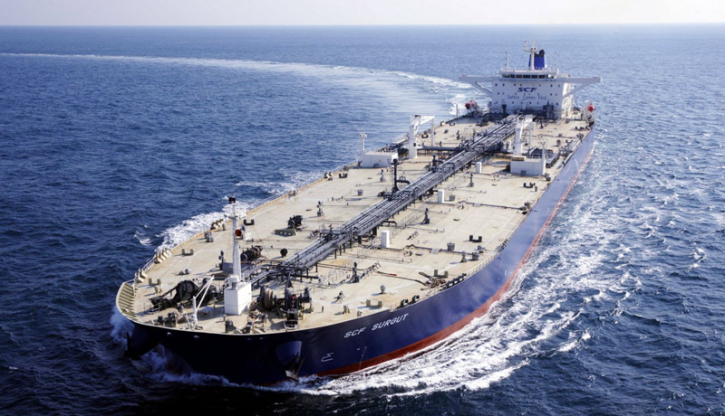
Increased U.S. sanctions to restrict the supply of Russian oil to China and India
Traders and analysts have predicted that the new U.S. sanctions on Russian producers and ships will result in a reduction in the supply of oil to Moscow’s top customers. Consequently, Chinese and Indian refiners will increase their oil sourcing from the Middle East, Africa, and the Americas, which will increase prices and freight costs.
On Friday, the U.S. Treasury implemented sanctions against Russian oil producers Gazprom Neft (SIBN.MM), Surgutneftegas, and 183 vessels that have transported Russian crude. The sanctions are intended to reduce the revenues that Moscow has utilized to finance its conflict with Ukraine.
As a result of the Group of Seven countries’ imposition of a price limit and western sanctions in 2022, the trade in Russian oil was redirected from Europe to Asia, resulting in the utilization of numerous tankers to transport oil to India and China.
Additionally, certain tankers have transported crude from Iran, which is also subject to sanctions.
According to two Chinese trade sources, the new sanctions will have a significant impact on Russian oil exports, necessitating that Chinese independent refiners reduce their refining output in the future. The sources declined to provide their names, as they are not authorized to communicate with the media.
In a note, Matt Wright, the lead freight analyst at Kpler, stated that 143 of the newly sanctioned ships are oil tankers that transported over 530 million barrels of Russian petroleum last year, which accounts for approximately 42% of the country’s total seaborne crude exports.
He also stated that China received approximately 300 million barrels of this quantity, while the majority of the remaining barrels were shipped to India.
“These sanctions will significantly reduce the fleet of ships available to deliver crude from Russia in the short term, pushing freight rates higher,” according to Wright.
Over the previous year, the designated tankers transported nearly 900,000 barrels per day of Russian crude to China, according to a trader based in Singapore.
“It is going to plummet off a cliff,” he concluded.
India’s Russian crude imports increased by 4.5% year over year to 1.764 million bpd during the first 11 months of the previous year, accounting for 36% of India’s total imports.
Over the same period, China’s volume, which encompassed pipeline supply, increased by 2% to 99.09 million metric tons (2.159 million bpd), which amounts to 20% of its total imports.
India purchases Urals oil, while China imports primarily Russian ESPO Blend petroleum, which is sold above the price limit.
According to Emma Li, an analyst at Vortexa, the severe enforcement of the sanctions would result in the cessation of Russian ESPO Blend crude exports. However, the extent of this impact would be contingent upon the lifting of the embargo by U.S. President-elect Donald Trump and the recognition of the sanctions by China.
Alternatives
According to the sources, the new sanctions will cause China and India to return to the compliant oil market in order to secure additional supplies from the Middle East, Africa, and the Americas.
“Spot prices for Middle East, African, and Brazilian grades have already increased in recent months due to the increasing demand from China and India, as supplies of Russian and Iranian oil have become more expensive,” they added.
An Indian oil refinement official stated, “Prices are already increasing for Middle Eastern grades.”
“There is no alternative but to pursue Middle Eastern oil.” It is possible that we may need to consider U.S. fuels as well.
According to a second Indian refining source, the sanctions on Russian oil insurers will compel Russia to price its crude below $60 per barrel in order to maintain its reliance on Western insurance and transporters.
Harry Tchilinguirian, the head of research at Onyx Capital Group, stated that Indian refiners, who are the primary consumers of Russian petroleum, are unlikely to wait until the situation is resolved. Instead, they will be compelled to seek alternative sources of Middle Eastern and Dated-Brent-related Atlantic Basin crude.
“Strength in the Dubai benchmark can only rise from here as we are likely to see aggressive bidding for February loading cargoes of the likes of Oman or Murban, leading to a tighter Brent/Dubai spread,” according to him.
Last month, the Biden administration designated an increased number of ships that handled Iranian petroleum in anticipation of the upcoming Trump administration’s more stringent measures. Consequently, the Shandong Port Group prohibited sanctioned tankers from docking at its terminals in the eastern Chinese province.
Tchilinguirian predicted that China, the primary purchaser of Iranian crude, will also transition to heavier Middle Eastern oil and likely increase its consumption of Canadian petroleum from the Trans-Mountain pipeline (TMX).
All Categories
Recent Posts
Tags
+13162306000
zoneyetu@yahoo.com



